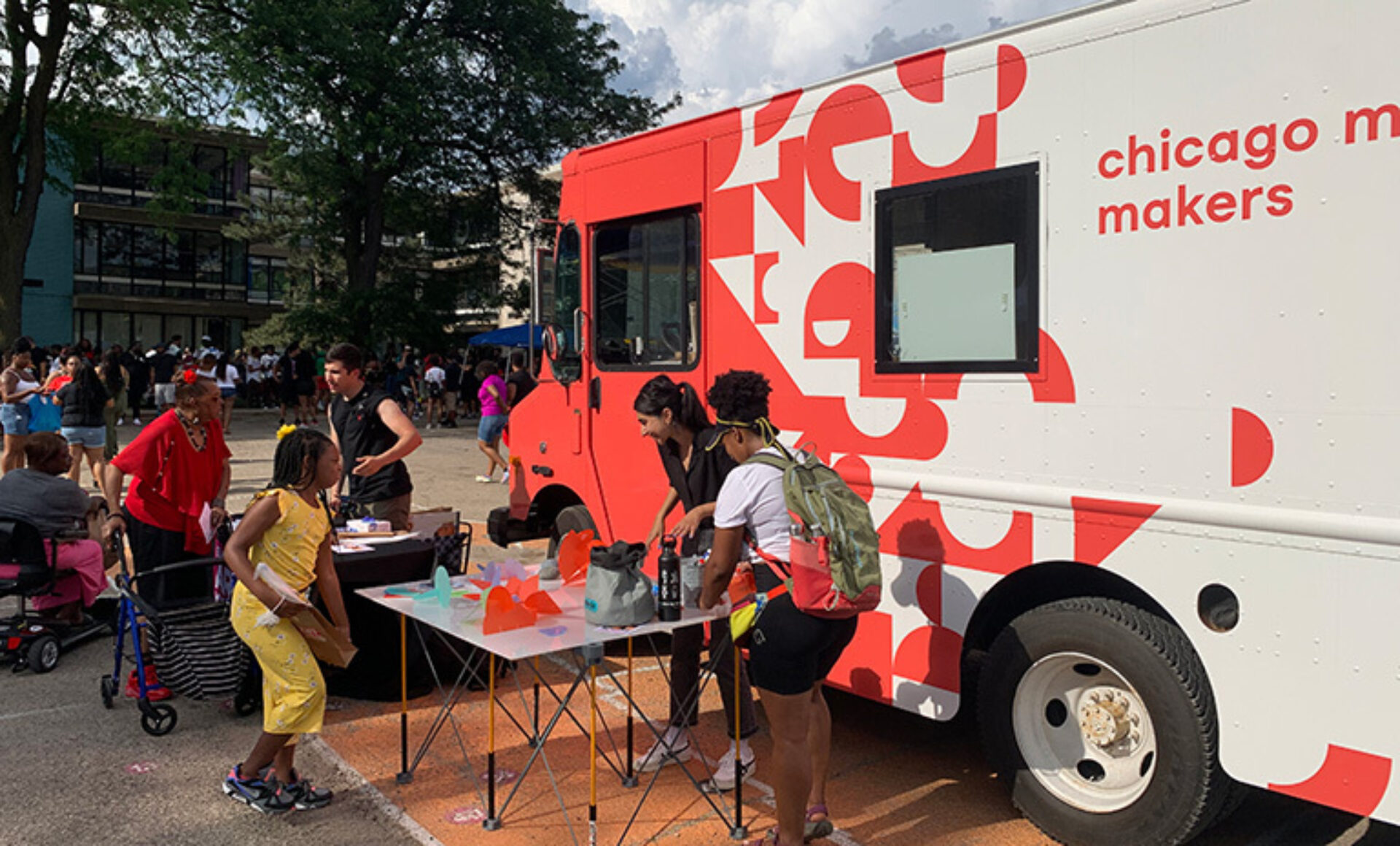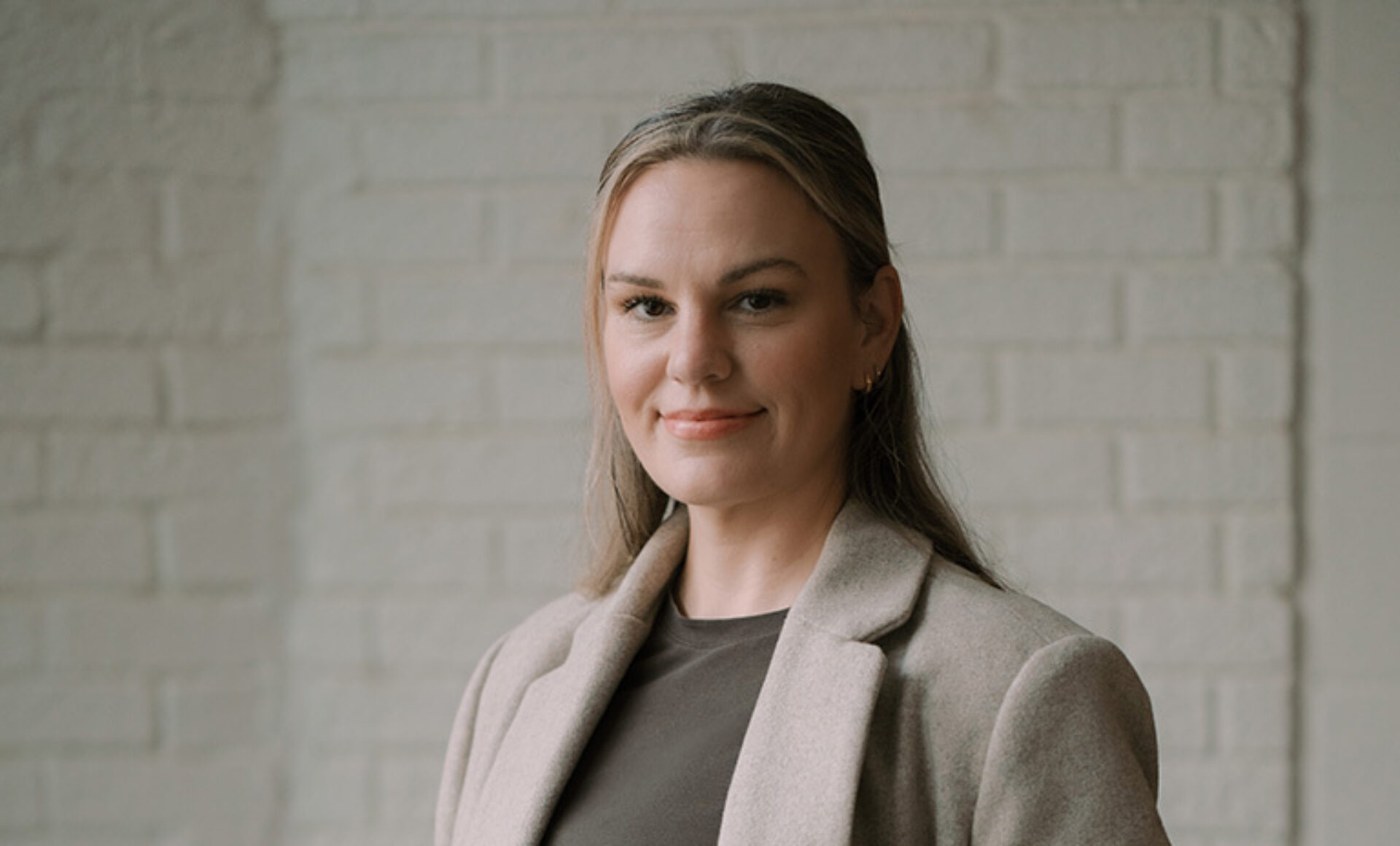Our 2025 IA Interior Architects Diversity in Design Scholarship awardees use their voices and ideas to create a more inclusive design industry. These students represent the diverse perspectives and experiences needed to build a design future that values the representation of the diverse communities we live in, work in, and design for. Through the IIDA Foundation, IA Interior Architects provides one $5,000 scholarship, one $3,000 scholarship, and four $500 scholarships to support these students in their design education journeys. Building a better design future starts with creating a more diverse design community — and each of these students give us a glimpse into just how bright that future is.
Our first and second place winners are Shailynn Charley, of Rocky Mountain College of Art and Design, and Anthony Pearl, Student IIDA, of Savannah College of Art and Design.
“As a Diné woman, I view design not only as a practice of aesthetics or function but as a reflection of cultural resilience, adaptability, and relationship with the land,”, says Charley. With the support of this scholarship she can continue to grow as a designer and help create inclusive environments. "Receiving first place for my essay, “How Indigenous Representation Enhances Interior Spaces,” is an incredible honor — it affirms the importance of cultural authenticity in design and encourages me to continue advocating for spaces that honor Indigenous voices and traditions,” said Charley.
Pearl says, “I’ve seen how much stronger ideas become when there are different perspectives in the room.” He has a personal connection to design and believes it has the power to tell stories, build resilience, and bring communities together. Being a recipient of this scholarship allows him to continue growing as a designer and to use design as a tool for positive change. “I’m honored to receive the IA Interior Architects Diversity in Design Scholarship, a recognition that reinforces my commitment to fostering inclusion through design. This award inspires me to keep contributing to a more equitable and innovative future in design,” he said.
Our honorees are Rida Ali, Student IIDA of Boston Architectural College; Marwa Aryan, Student IIDA of Colorado State University; Kelly Knodel, Student IIDA of Bowling Green State University; and Mia Pardo of Texas Tech University.
Read our first- and second-place winners’ essays below.
How Indigenous Representation Enhances Interior Spaces
By: Shailynn Charley
As a Diné woman, I view design not only as a practice of aesthetics or function but as a reflection of cultural resilience, adaptability, and relationship with the land. For me, the role of diversity and equity in interior design holds profound significance; it is an opportunity to create spaces that embody belonging, support well-being, and foster connections to both people and place. The industry has certainly made strides in diverse representation over recent years, yet there remains a need for genuine equity and inclusion. While many firms now celebrate the values of diversity, fewer have taken steps to invite Indigenous voices into the creative and decision-making spaces. The result can be a limited cultural perspective in the designs we create — spaces that may lack the depth and authenticity that true cultural representation brings.

For Native people, this lack of representation often means spaces that don’t reflect or respect our identities and experiences, which are rich with a knowledge of sustainable practices and connection to land. Increased equity — particularly the inclusion of Native voices — adds significant value to the industry by enhancing its resilience, sustainability, and adaptability. Our communities, especially the Diné, are resilient by nature. We have faced generations of change and disruption, responding through the strength of our traditions, our cultural practices, and our relationships with the natural world. This approach can greatly inform the design industry. Indigenous values of sustainability and adaptability shape how we relate to resources, spaces, and structures, always with an eye toward balance and respect for the land.
By bringing these values into design, the industry gains models for creating spaces that respect the cycles of nature, use resources responsibly, and foster human and environmental health. Further, equitable representation fosters belonging in ways that support community resilience. When Indigenous voices are authentically represented, we create spaces that resonate more deeply with diverse communities. For Native peoples, this includes spaces where we see our culture reflected and respected — whether through material choices, spatial arrangements, or environmental practices. This sense of belonging is a form of social resilience, enabling communities to feel seen and valued even in the face of ongoing change.
As a Diné designer, I believe that my culture’s emphasis on relational and community-based perspectives can help interior design better serve diverse communities. Our designs must be flexible and capable of adapting to changing cultural, social, and environmental needs. This includes drawing upon Indigenous ecological knowledge that harmonizes with natural surroundings, integrates local materials, and considers future generations. Equity in representation is, therefore, not only about diversity in appearance but about deepening the industry’s understanding and responsiveness to the communities it serves. Inclusion of Native voices is a path forward for the interior design industry, making it more resilient, adaptable, and meaningful. By integrating Indigenous principles, the design industry can become not only a field of aesthetic innovation but a force for creating sustainable and harmonious communities, honoring IA’s vision for a future grounded in equity, resilience, and respect.
Building Resilience Through Equity in Design
By: Anthony Pearl, Student IIDA
Resilience in design isn’t just about dealing with challenges. It’s about helping communities thrive by creating spaces that connect people, adapt to their needs, and make everyone feel included. Recent events like social inequities, environmental issues, and cultural shifts have shown that we need to rethink how we design spaces that truly support people. At the heart of this is equity, which plays a key role in making communities more resilient and creating belonging. This became real for me during a grocery store project for a diverse community in Atlanta. What began as a basic concept quickly became something more meaningful. The neighborhood didn’t just need a place to buy food — it needed a space where people could connect and feel proud of their culture. Many residents relied on walking or public transit, so accessibility became a focus.

We realized the grocery store could be more than a store — it could be a hub for the entire community. To make this happen, we created spaces that could evolve as the community’s needs changed. Leadership and decision-making roles often lack voices from underrepresented communities. I’ve seen how much stronger ideas become when there are different perspectives in the room. With a background shaped by resilience, I know how important it is to include diverse voices. Equity opens doors to solutions that reflect a wide range of experiences, making designs more flexible and resilient. I’ve realized adaptability isn’t something we add — it’s part of how we design. When we listen to the people who use a space, designs naturally become responsive to their needs over time. Flexibility like this is vital in a world that’s always changing.
Belonging is central to resilient design. When people see themselves and their stories reflected in a space, they feel more connected to it. That connection inspires them to invest in their communities. This doesn’t happen by chance — it happens when equity and inclusion are part of the process from the start. Resilience isn’t just about overcoming challenges. It’s about using them as opportunities to grow and create something better. When we prioritize equity, we create spaces where communities can thrive no matter what comes their way. This is the kind of design I strive to create — spaces that tell stories and help build a stronger, more connected future. Areas for farmers’ markets allowed vendors to share goods and culture.
Gathering spaces became flexible for workshops, classes, or small business training. These features made the store more than functional — it became a space for growth and connection. This project taught me that equity isn’t just about inclusion. It’s about designing spaces that reflect the people who use them. While the design industry has made progress with diversity, there is still more work to do.
Leadership and decision-making roles often lack voices from underrepresented communities. I’ve seen how much stronger ideas become when there are different perspectives in the room. With a background shaped by resilience, I know how important it is to include diverse voices. Equity opens doors to solutions that reflect a wide range of experiences, making designs more flexible and resilient. I’ve realized adaptability isn’t something we add — it’s part of how we design. When we listen to the people who use a space, designs naturally become responsive to their needs over time. Flexibility like this is vital in a world that’s always changing. Belonging is central to resilient design. When people see themselves and their stories reflected in a space, they feel more connected to it. That connection inspires them to invest in their communities. This doesn’t happen by chance — it happens when equity and inclusion are part of the process from the start. Resilience isn’t just about overcoming challenges. It’s about using them as opportunities to grow and create something better. When we prioritize equity, we create spaces where communities can thrive no matter what comes their way. This is the kind of design I strive to create — spaces that tell stories and help build a stronger, more connected future.
Learn more about the IA Interior Architects Diversity in Design Scholarship here






